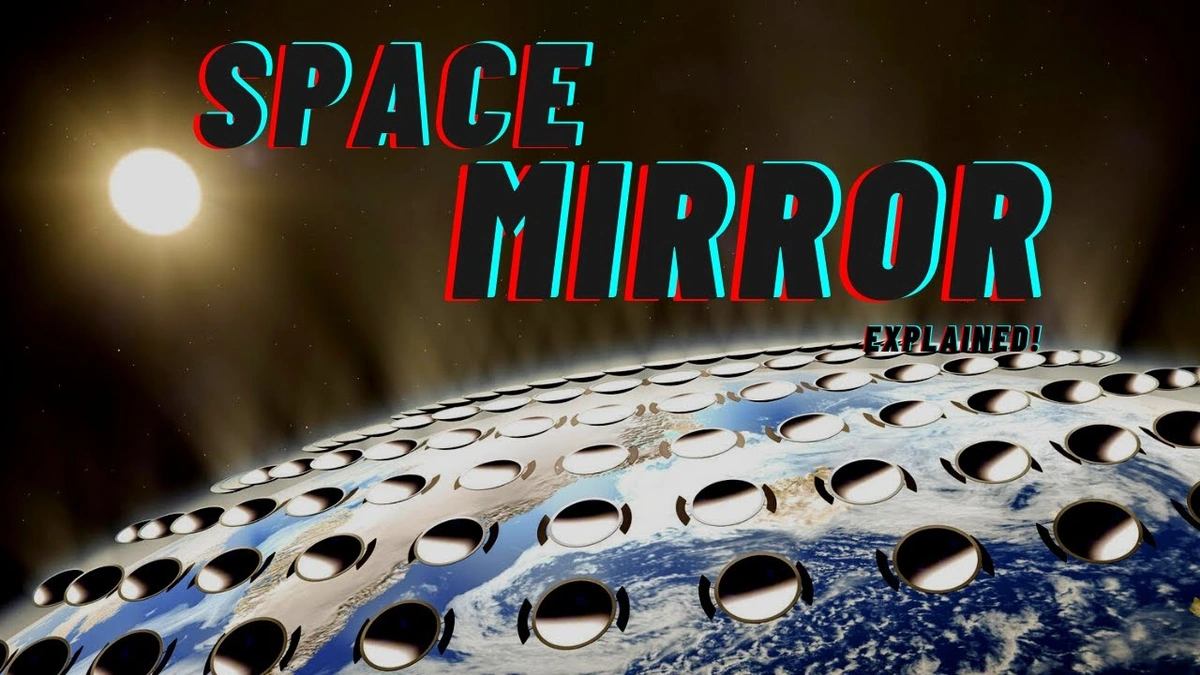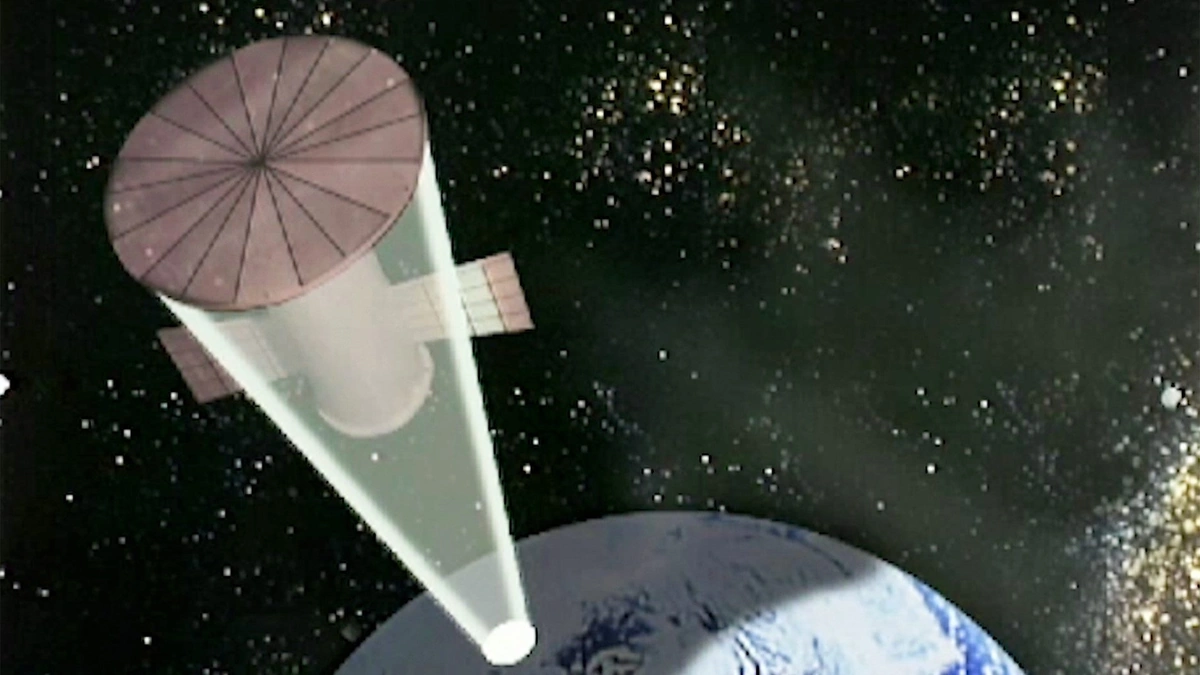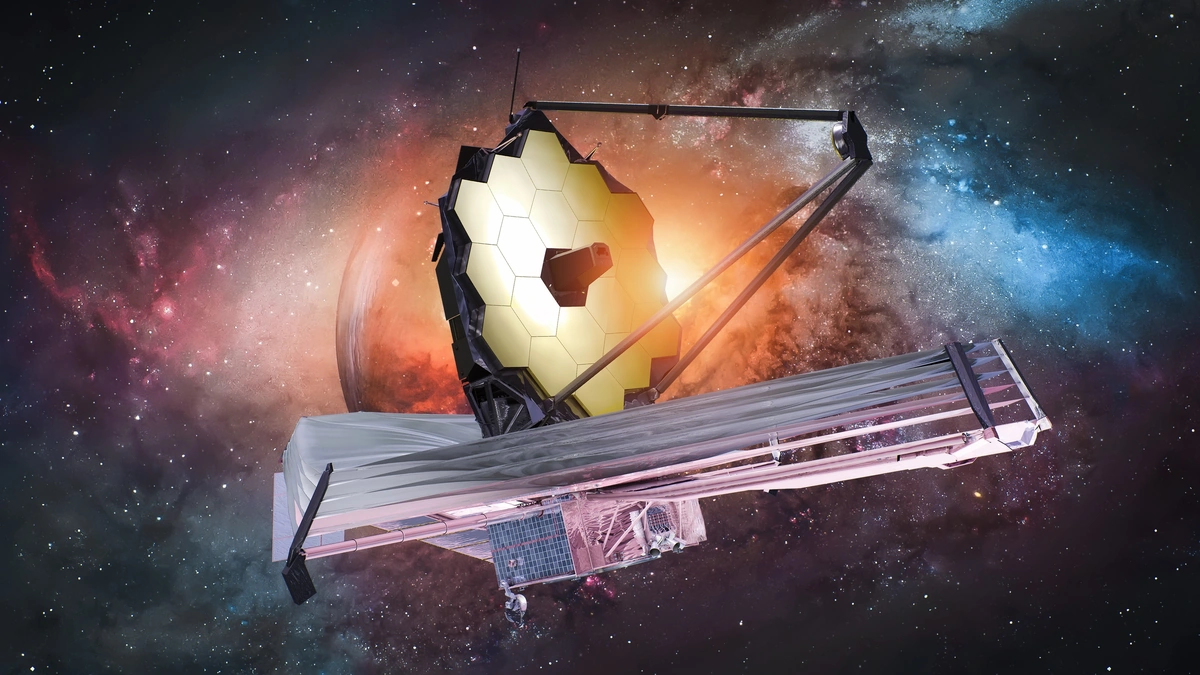Astronomy Threatened by Space Mirrors for Solar Power, Experts Say
Here’s the thing: when you hear about space mirrors being used for solar power, your first thought might be, “Wow, that’s straight out of a science fiction movie!” And you wouldn’t be entirely wrong. But the reality is far more nuanced, and potentially, a little worrying for those of us who love staring up at the night sky. So, let’s dive into what’s happening and, more importantly, why it matters.
The Looming Threat to Dark Skies

The concept is simple enough: launch large reflectors into orbit to bounce sunlight back to Earth, providing a clean and virtually limitless source of energy. Sounds fantastic, right? But before we get too excited about solving the energy crisis, we need to consider the potential downsides. And one of the biggest concerns raised by astronomers is the increasing light pollution caused by these space-based solar power systems.
Think about it: these aren’t small, subtle objects. We’re talking about massive, highly reflective surfaces designed to redirect sunlight. And that light, while beneficial for generating power, can also interfere with astronomical observations. It’s not just about aesthetics – though a night sky cluttered with artificial stars is hardly ideal. It’s about the ability of scientists to study the cosmos, discover new planets, and understand the universe we live in. We need to consider the impact on celestial observation and light pollution from these projects.
Why This Matters to India
Now, you might be thinking, “Okay, that’s a problem for astronomers in fancy observatories, but what does it have to do with me?” Well, quite a lot, actually. India has a rich tradition of astronomy, dating back thousands of years. From ancient observatories like Jantar Mantar to modern facilities like the Giant Metrewave Radio Telescope (GMRT), India has always been at the forefront of astronomical research. But, consider the importance of renewable energy for India. These mirrors could provide a potential solution.
And, here’s the emotional angle: imagine a future where the beauty of the night sky, a source of inspiration and wonder for generations, is diminished by the glare of artificial lights. Imagine the impact on stargazing, a pastime enjoyed by millions across the country. This isn’t just about science; it’s about preserving a cultural heritage and a connection to the cosmos. This issue impacts the environmental impact on our ability to gaze at the stars.
Navigating the Path Forward | A Delicate Balance
So, what can we do? Should we abandon the idea of solar power from space altogether? Not necessarily. The key is to find a balance between our energy needs and our responsibility to protect the night sky. This requires careful planning, international cooperation, and a willingness to consider alternative solutions.
One approach is to develop technologies that minimize light pollution. For example, reflectors could be designed to direct light only to specific areas, avoiding unnecessary illumination of the night sky. Advanced control systems could also be used to adjust the brightness and position of the reflectors, minimizing their impact on astronomical observations. And there needs to be regulations around orbiting reflectors .
But perhaps the most important step is to foster a dialogue between the scientific community, policymakers, and the public. We need to have a frank and open discussion about the potential benefits and risks of space-based solar power , and we need to ensure that all voices are heard before any major decisions are made. The conversation should include discussion about orbital mechanics to ensure safe and consistent energy production.
International Cooperation and the Future of Space
Let’s be honest – this isn’t just India’s problem. It’s a global challenge that requires a global solution. The deployment of large-scale space mirrors will have implications for the entire planet, and it’s crucial that all nations work together to ensure that these technologies are used responsibly.
This includes establishing international standards for light pollution, developing protocols for coordinating astronomical observations, and creating mechanisms for resolving disputes. It also means investing in research to better understand the long-term effects of space-based solar power on the environment and on human health. Space exploration is evolving, as discussed on sites such asNASA.
Ultimately, the future of astronomy – and the future of our relationship with the cosmos – depends on our ability to act responsibly and thoughtfully. We need to embrace innovation, but we also need to remember that the night sky is a precious resource that must be protected for generations to come. Consider the long-term view and the environmental conservation of our night skies.
Alternatives to Consider
Before we fully commit to space mirrors , it’s worth exploring other options for renewable energy. Ground-based solar farms, wind turbines, and geothermal power plants all have their advantages and disadvantages, but they don’t pose the same threat to astronomy as space-based systems. It is also important to consider ground based solar options.
Perhaps a combination of different technologies is the best approach. By diversifying our energy sources, we can reduce our reliance on any single technology and minimize the risk of unintended consequences. This is a complex issue, and there are no easy answers. But by engaging in open and honest dialogue, and by working together across borders, we can find a path forward that balances our energy needs with our responsibility to protect the planet. It would be useful to compare with terrestrial solar options.
And that, my friend, is the crux of the matter. The future of solar power and the fate of our night skies are intertwined. It’s up to us to ensure that we make the right choices.
FAQ
Frequently Asked Questions
Will space mirrors completely ruin astronomy?
Not necessarily. The impact will depend on the scale of deployment and the technologies used. Careful planning and mitigation strategies can help minimize the negative effects. However, the topic of cost effectiveness must be considered.
Are there any benefits to space-based solar power besides clean energy?
Potentially. It could provide a reliable and consistent source of energy, even in areas with limited sunlight. It could also reduce our reliance on fossil fuels and help combat climate change. Read more about theimpacts of space.
What can I do to help protect the night sky?
Support organizations that advocate for dark sky preservation. Reduce your own light pollution by using shielded outdoor lights and turning off unnecessary lights at night. You can also advocate for policies that promote responsible lighting practices in your community. Consider the long term sustainability impact.
Who is responsible for regulating space mirrors?
That’s a complex question. There is currently no single international body that regulates the deployment of large-scale space-based technologies. This is an area that needs further attention and development. We must find ways to properly do space regulation .
What if I forgot my application number?
Most application portals have a “forgot application number” option. You’ll likely need to provide your registered email or phone number. Check the official website. You may have to engage with customer support to retrieve this.
Where can I find updates on the Astronomical Society‘s position?
The Astronomical Society of India and other professional organizations often publish statements and reports on issues affecting astronomy. Check their official websites for the latest information. The topic of expert opinions on the issue is also of interest.
And so, we’re left not with a simple answer, but with a profound question: How do we balance the boundless potential of human innovation with our responsibility to preserve the wonders that inspire us? The answer, I suspect, lies not in choosing one over the other, but in finding a way to weave them together, creating a future where technology and nature coexist in harmonious, awe-inspiring balance. It is crucial to consider scientific advancement while simultaneously keeping an eye towards preservation.













